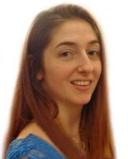Dreaming
Scientists Can Communicate With Lucid Dreamers While They Sleep
A new study provides evidence of dialog between scientists and dreamers.
Posted February 18, 2021 Reviewed by Matt Huston

Key Points: Sleep scientists have discovered that they can relay information to people who are having lucid dreams, and that the dreamers can respond with physical movements. This finding raises the question of whether "interactive dreaming" could have scientific and therapeutic applications.
Can we communicate with dreamers while they’re asleep, in their dream world? Can we ask questions about their dreams as they are occurring, and get intelligent and observable responses? Can we record dreams? Direct dreams?
These are some of the questions a new paper puts forth, in conducting a proof-of-concept study that suggests, yes, "real-time dialog between a dreamer and experimenter" is possible, and there are a variety of methods that seem promising already.
The study, published in Current Biology, is an international collaboration between four sleep research teams, in Germany, the Netherlands, France, and the United States.
Researchers at each of these sites set out with the goal of recording lucid dreams in participants sleeping in the laboratory with polysomnography, and once the participant was lucid, communicating with them.
The four teams used different methods to do this. The French team invited narcoleptic patients to take daytime naps in the laboratory; narcolepsy is a sleep disorder associated with very short sleep latencies and a tendency to quickly go into REM sleep and also to experience lucid dreams. The German team invited experienced lucid dreamers for overnights in the laboratory and used early morning awakenings to encourage lucid REM sleep (a method known as Wake-Back-To-Bed). The U.S. and Dutch teams invited relatively inexperienced participants but attempted to train the participants to lucid dream prior to taking a nap in the laboratory; this technique involved using audio and visual sensory cues, a beeping sound and a flashing light, played while the participant was in REM sleep to hopefully get incorporated into a dream and trigger the realization in the participant that they were dreaming.
All four teams did observe lucid dreams in their participants, using the gold-standard method of objectively verifying lucid dreams – the eye signal method. For this to occur, a participant is instructed to, once lucid, signal to the experimenter by looking left-right-left-right very quickly with their eyes while in the lucid dream. Because the participant is being recorded by polysomnography, electrodes around the eyes produce a clear left-right eye signal. The experimenter can thus be sure that the participant is lucid within a REM sleep dream.
At that point, the experimenters could start communication! “Hello (Dream) World!” The experimenters at each site had different messages to send. In the U.S. and Netherlands, softly spoken math problems were presented. In Germany, beeps were used, to present math problems in Morse code. In France, softly spoken yes/no questions were presented.
The participants awaited their message. When they observed the cues or the speech, they were instructed to respond, either with specific numbers of left-right eye signals in response to math problems, or in the French site, with specific muscular movements – frowning eyebrows, or smiling. Basically, in addition to control of eye movements, lucid dreamers can produce twitches in other muscles through intentionally moving these muscles in a dream. If you frown in a dream, the muscles above your eyebrows twitch, and if you smile, the cheek muscles tense.
Specific Cases of Communication With Dreamers
Below are some cool examples from each team:
U.S. Team: An auditory cue was used to induce lucidity, verified by Left-Right eye signals. The spoken stimulus "8 minus 6" was presented to the participant. The correct answer was produced with 2 Left-Right eye signals (this happened twice). Upon waking, the participant reported dreaming about his favorite video game: "I was in a parking lot at night, then suddenly it was daytime and I was in the video game. I thought, okay this is probably a dream. And then something weird... I lost control of all my muscles. There was a roaring sound of blood rushing to my ears. ... think I heard three [math problems] ... I answered ‘2’ for all of them, but I don’t remember what the first one was. I just remember the last one was ‘8 minus 6.’'’
German Team: The participant was stimulated during REM sleep with red and green LED light flashes to convey Morse-coded math problems. The question "4 minus 0" was presented. The dreamer answered "4" with Left-Right eye signals. Dream report: "A medical practice, maybe for physiotherapy. I was alone in the room and there was a large doctor’s couch in the middle of the room, shelves, sideboards. The couch was strange. The room seemed solid and steady, when the lights started flickering. I recognized this as the flashing signal [Morse code] from the outside (4 plus 0) and reported the answer ‘4’ with eye signals. I looked for a tool that could flash, and I found a round bowl full of water. The water flashed (like a fish tank light that one turns on and off). I again saw a signal, but was not able to identify it. The bowl broke because I accidentally let it fall while trying to decode the flashes. I left the room, trying to find something else that could flash, and went outside and looked up to the clouds. There was yellow sunlight and light gray clouds. I saw variations in the brightness, clouds drifting past quickly, but again, unfortunately, I could not decipher a flashing signal. It was too fast to decode, but I knew that these were math problems."
French Team: A daytime nap in a participant with narcolepsy. Before sleep, the participant was instructed to contract smiling muscles twice to signal "YES" and frowning muscles twice to signal "NO." In total, five yes/no questions were presented, two were clearly correctly answered. Dream report: "In my dream, I was at a party and I heard you asking questions. I heard your voice as if you were a God. Your voice was coming from the outside, just like a narrator of a movie. I heard you asking whether I like chocolate, whether I was studying biology, and whether I speak Spanish. I wasn’t sure how to answer the last one, because I am not fluent in Spanish, but I have some notions. In the end, I decided to answer ‘NO’ and went back to the party."
Dutch Team: A nap with auditory and visual cues presented for lucid-dream induction. The math problem in this example (1 plus 2) was the seventh problem delivered and was followed by a correct eye-movement response (3). Dream report: "In my dream I thought ‘I have to remember things’ and I heard the sounds and heard you talking while I was dreaming. I sat down in the car, and then I got a part of the assignment... I was also really proud that I succeeded with a sum calculation, and that I heard them, and that I was aware that I was dreaming." The participant stated that the source of the math problems "felt like a sort of radio in the car."
As a dream researcher myself, one of the most exciting findings from the study is actually the mere fact that participants were able to comprehend speech from within lucid dreams. This alone really simplifies the concept of two-way communication, because if we can just speak to participants then we don’t need to use complicated codes like flashing lights or beeping sounds. That three different groups showed this is possible, especially with the French team asking longer phrases such as yes/no questions, is really promising.
In addition, the combined forces of four different laboratories, and the varied approaches used by the different teams, is a strength of the publication, showing the variety of methods that might be used and further tested going forward, and that each of them was successful in some manner.
It's still a proof-of-concept, so in order to really use these techniques to "record" dreams in real-time, the hit rates need to be higher. Hopefully research going forward will be able to better determine when participants are best able to comprehend and respond to communication. Of course, speech seems like the best method of communicating complex information, but a separate question might be whether other types of stimuli are more readily incorporated, such as tactile or vibration stimulation.
Besides reporting dream content from the dream-state, there are many exciting potential applications of these techniques. One would be "dream therapy," for example, in the treatment of nightmares: a therapist or even a pre-recorded instruction could be used to prompt a dreamer to re-imagine a bad dream, or to induce a positive dream. This could also have creative applications: Artists could use lucid dreams to play with paintings or story-telling, and record their ideas or their art as they are creating it in the expressive and associative dream state.
Of course, interactive dreaming could also be useful for the experimental side of dream science – to be able to ask participants to complete a task, such as a motor learning task like practicing throwing darts while in their dream, allows us to see whether dream rehearsal improves performance. We can also look more generally at processes of dream generation; if we ask someone to attempt to jump or to fly or to visualize the color red or to feel the emotion of sadness, what happens in the dream? How does intentional instruction influence dream generation and dream narrative? These are all fascinating possibilities in interactive dreaming.
References
Konkoly et al. 2021. Real-time dialog between experimenters and dreamers during REM sleep. Current Biology.




